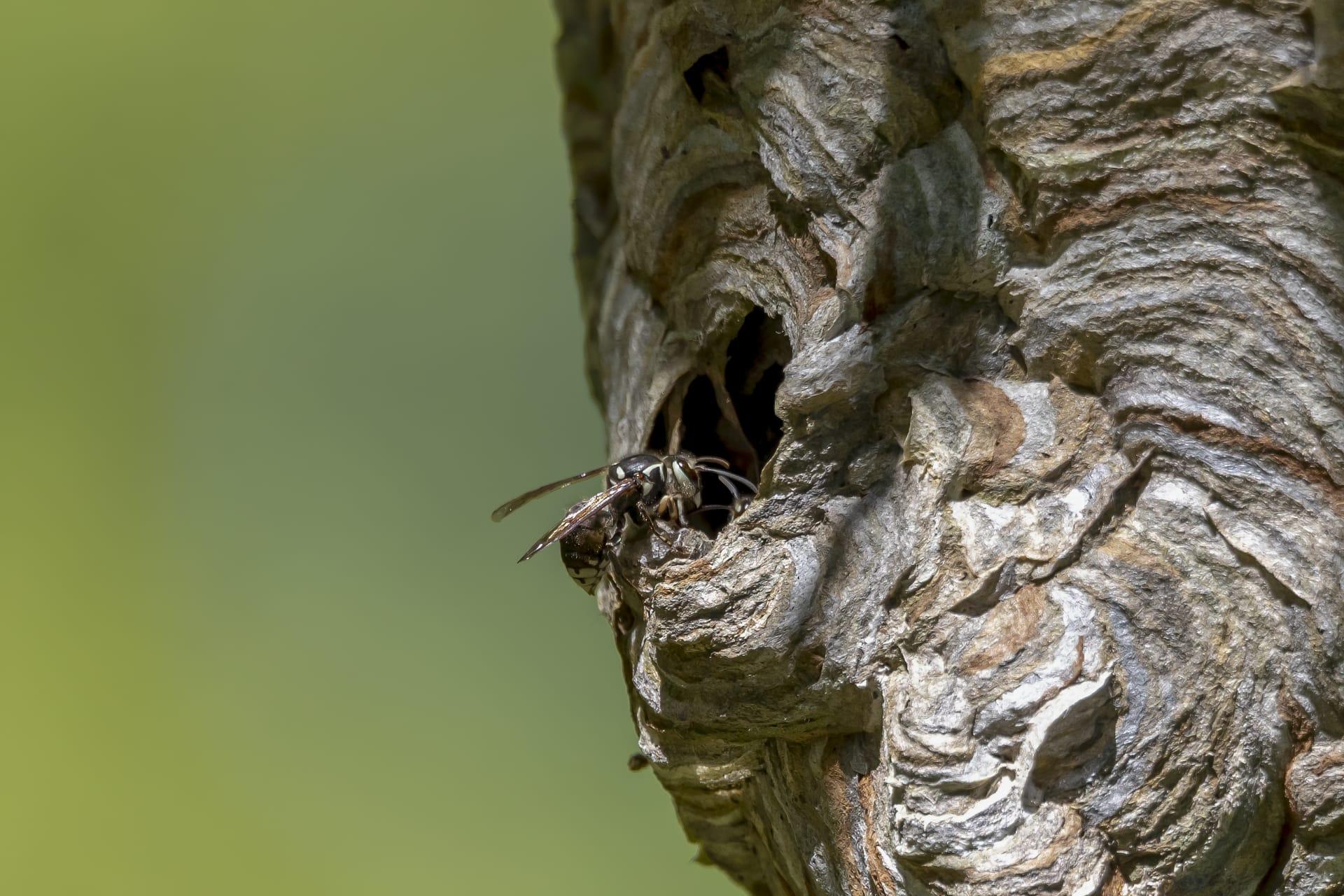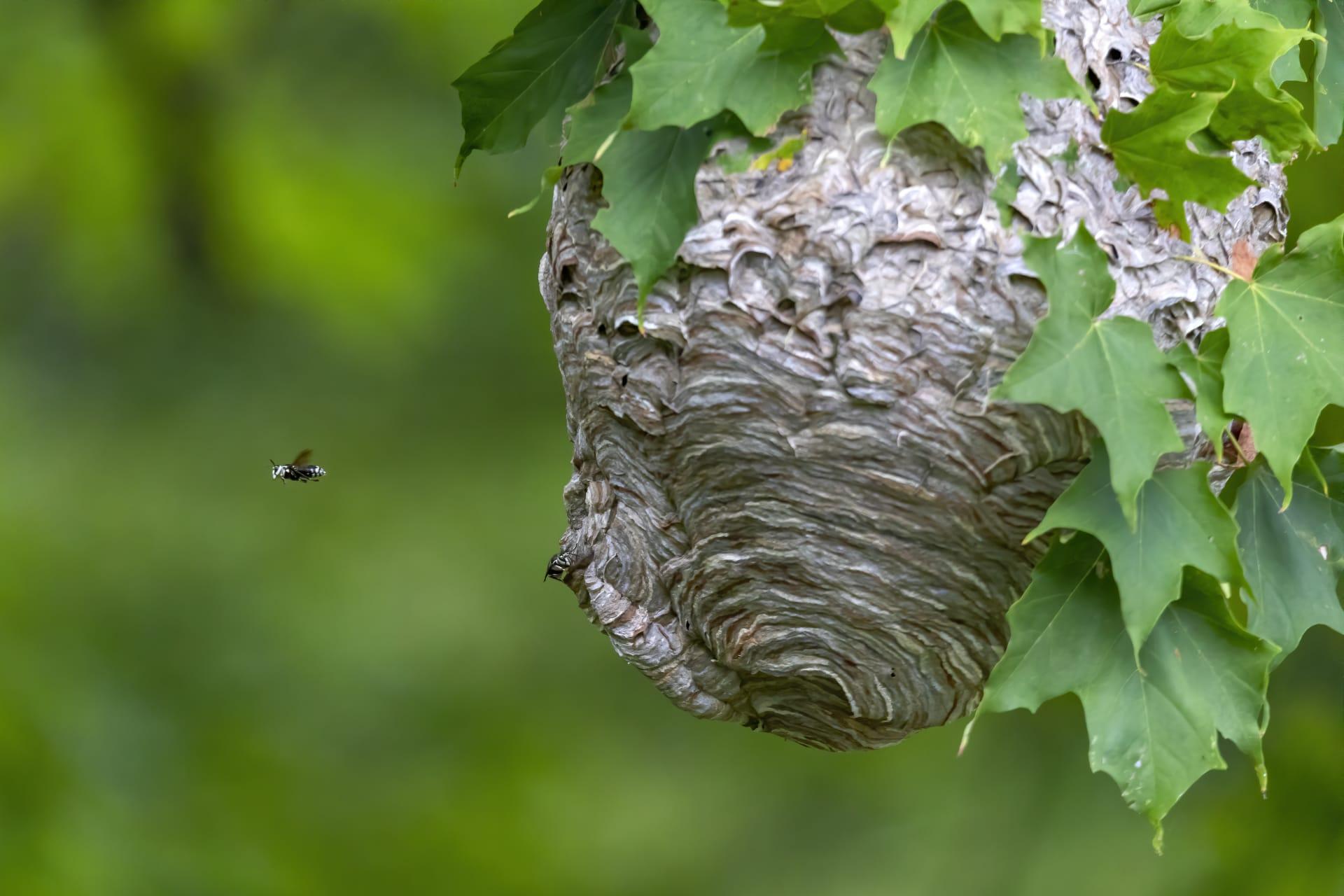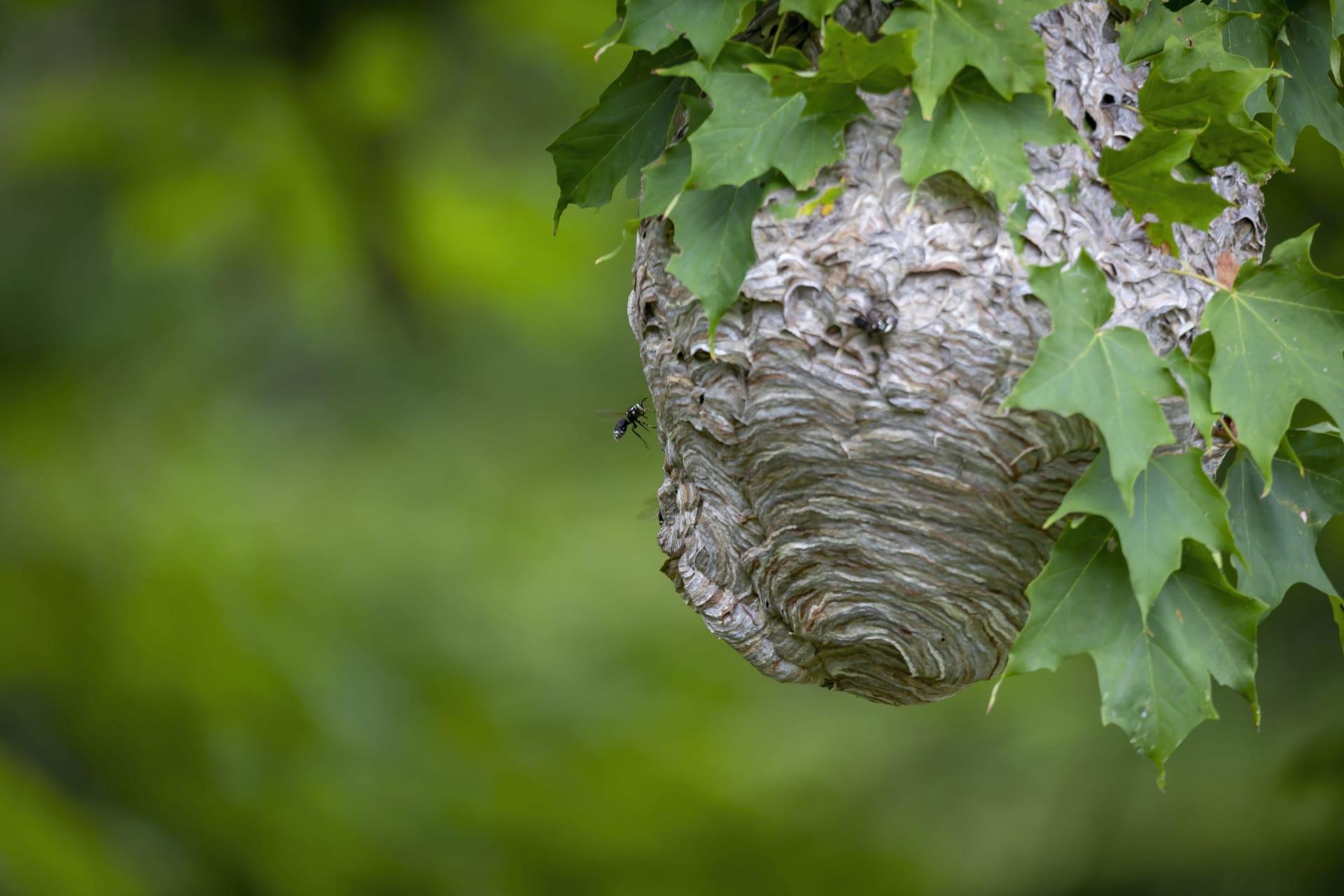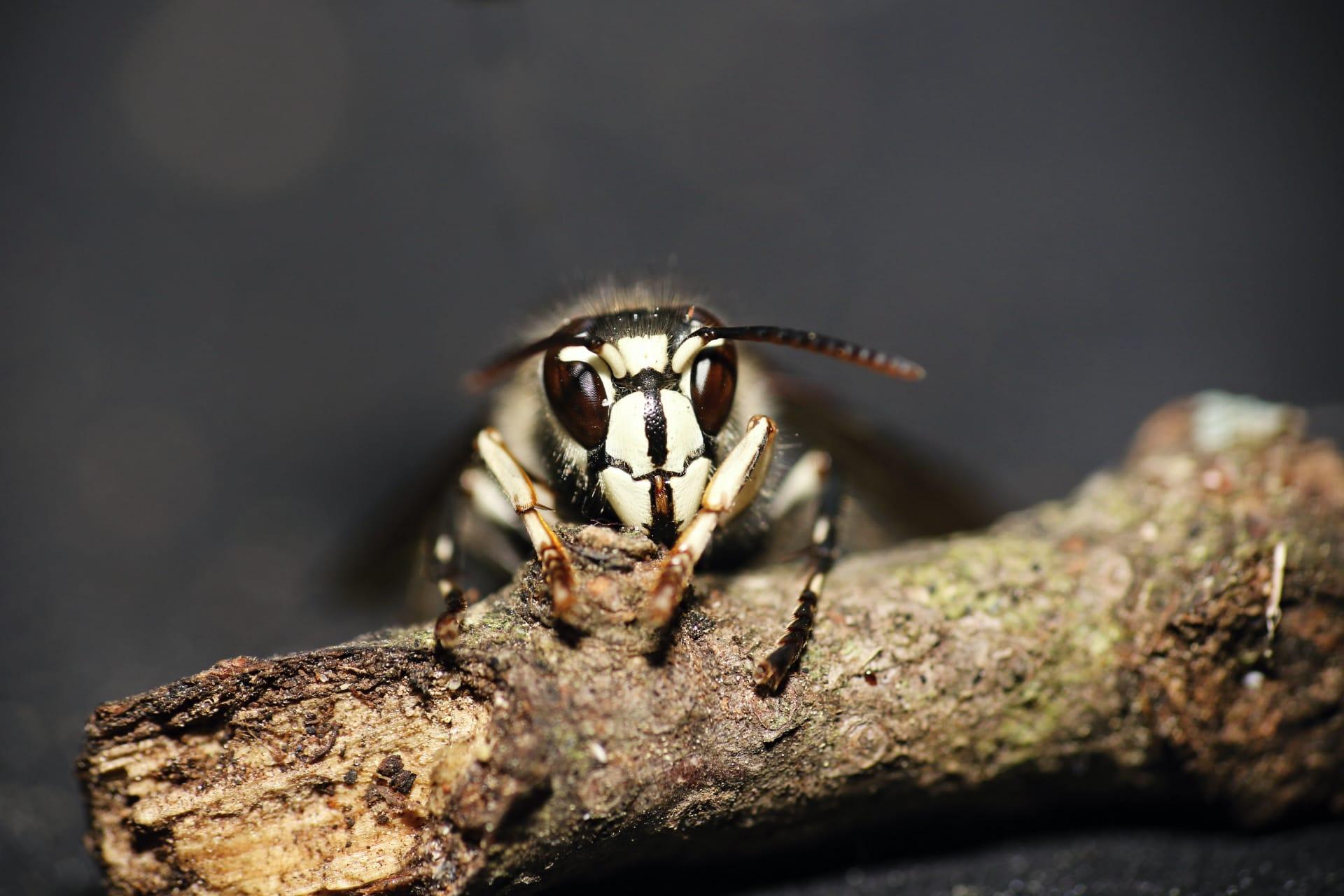1
Did you know that Bald Faced Hornets are not true hornets? That's right! Despite their intimidating name, these insects are actually a type of yellowjacket wasp. They stand out with their strikingly white and black patterns, quite different from the typical yellow and black of their yellowjacket relatives. What's more, these creatures are considerably larger, with queens reaching up to 0.8 inches (20 mm) in length, making them one of the largest wasps in North America.
Bald Faced Hornets are master architects. Their nests, a marvel of insect engineering, are large, grey, and papery, resembling a football. Constructed mainly from chewed wood fibers mixed with saliva, these nests can grow to be 14 inches (35 cm) in diameter and 24 inches (60 cm) in length. Typically found hanging from trees, shrubs, or occasionally buildings, each nest houses a single queen and can accommodate 400 to 700 workers.

2
Here's a fascinating fact: Bald Faced Hornets are eco-friendly pest controllers! They play a significant role in controlling pest populations, including flies, caterpillars, and spiders. Their diet mainly consists of these insects, which they chew and feed to their larvae. In return, the larvae produce a sweet secretion that the adults consume, creating a perfect food exchange system within the colony.
Another intriguing aspect of these hornets is their communication system. Bald Faced Hornets use pheromones, chemicals that convey messages, for various colony activities. They mark paths to food sources, alert others to defend the nest against threats, and guide others back to the nest. This sophisticated chemical communication is essential for their survival, especially when coordinating defense strategies against predators.

3
Did you ever wonder about the aggressive reputation of Bald Faced Hornets? Well, they are known for their fiercely protective nature, especially when it comes to defending their nest. If they perceive a threat, they can attack in a group and chase the intruder for considerable distances. They have smooth stingers, allowing them to sting repeatedly without losing their stinger, unlike honeybees.
Seasonal changes bring a dramatic shift in the life of Bald Faced Hornets. In the fall, new queens and male hornets are produced in the colony. These new queens mate and then hibernate through the winter, while the rest of the colony, including the old queen, perishes with the cold. Come spring, the new queens emerge, each starting a new colony, ensuring the continuation of their species.

4
Bald Faced Hornets have a unique approach to temperature regulation in their nests. During hot days, workers can often be seen fanning at the nest entrance, effectively circulating air and cooling the nest. They also collect water and spread it on the nest's outer surfaces, which, through evaporation, helps reduce the internal temperature.
Another interesting behavior is their foraging pattern. Bald Faced Hornets are diurnal, meaning they are active during the day and rest at night. They are particularly active in the late summer and early fall when they are gathering food to sustain the colony through the winter. During this time, they may venture further from the nest and are more likely to come into contact with humans.

5
Bald Faced Hornets are not just predators; they also have a sweet tooth. Apart from hunting other insects, they are drawn to sugary substances. They feed on fruit juices, tree sap, and even human-provided sources like soda and ripe fruit. This diet variation is essential for their energy needs, especially for the adults who require more carbohydrates.
The Bald Faced Hornet's nest design has a unique defensive feature. The entrance to their nest is typically located at the bottom. This design allows for a single, easily defendable entry point, making it challenging for predators to invade. The hornets guard this entrance zealously, ready to swarm and protect their home at any sign of danger. This architectural strategy is a crucial element of their survival tactics.